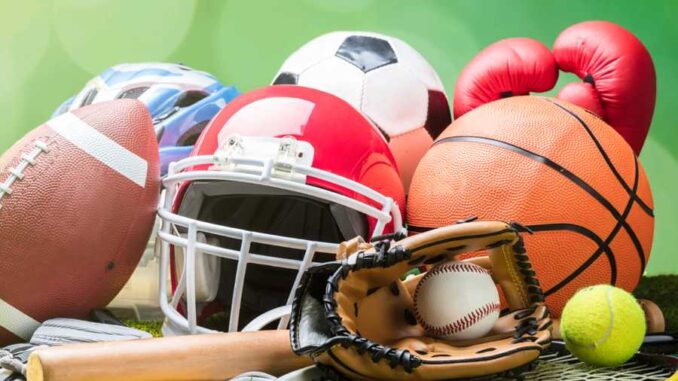
How long has it been since you had an easy knowledge of the players on your favorite college team’s roster? Has that roster changed so much from year to year that you just can’t keep up? For that matter, are there now turnstiles on your locker room doors? Does your quarterback show up in a chauffeured limo?
The days of big business college sports have consumed us. The innocence of true amateurism has become a 50-watt bulb in a 500-watt world.
Am I the only one who longs for the good ol’ days when the word “amateur” didn’t include players in double-vested suits and $40,000 gold necklaces? I used to view my gridiron favorites as armies. Today, I can’t seem to get past the Armanis.
Unless you’re a Washington Husky fan, longing for the good ol’ days is somewhat akin to masochism for fans in the Northwest because few had consistent winning seasons. Yet even though our teams didn’t win often, we knew they were “our” teams, and we knew the names of the players and followed their highs and lows for four years. We felt close to our programs, like family.
But then, the power brokers of college football came along—the big boys. The legendary programs like Oklahoma, Alabama, and Ohio State, and despite their legendary successes, they wanted more. They used their robust influences to increase scholarships to 100 per team, not because they ever intended to play 100 players, but because they wanted to stockpile elite talent so that others couldn’t have them.
I get it. Put 50 kids into your scheme and keep the other 50 from competing against you.
I confess I did precisely that this year in Fantasy Football. For most of the season, I had five elite quarterbacks, not because I could play more than two at a time but because I didn’t want the others to use them against me. Did it work? Oh yes. I won 12 straight games and finished number one among 12 teams in the regular season. I dominated the stats and the postseason playoff. So yeah, I get it. It works.
But not for everyone. It didn’t work for fans who grew weary of the same teams winning and small teams being drubbed by 70+ points. Fans began to lose interest, and in desperation to get them back, the NCAA dropped scholarships dramatically. Parity began to return to the game, and so did the fans.
Eventually, the big boys returned because once addicted to the lust for power and money; it’s hard to get un-addicted. So, the big boys returned. Recently, they blasted the transfer portal wide open, giving them excellent access to elite talent they could lure from lesser teams. Tampering has run rampant, and, just as we all expected, the rich are once again getting richer.
But even that wasn’t enough for the power brokers as they pushed through NIL to further benefit the “haves” and oppress the “have nots.”
I know I’m just one fan and represent just one opinion, but it seems to me that college sports have become greedy and pompous all at the same time. I don’t see an end to it. Instead, I see it getting worse because addictions to power and money usually get bigger, not smaller. Simply stated, for those addicted, there is no such thing as enough.
Indeed, we still have college football, but certainly, it is not amateur. It has become big business, semi-professional, and seems undaunted in its path to complete professionalism, and that is a problem because professional sports fill out screens with arrogance and suddenly-rich kids who try to out-cool everyone else. Sudden opulence does that to people. In time, it will do that to college sports.
To me, it’s become unsavory and nearly indigestible. It’s about as attractive as a meathead doing a pole dance in a gold lame’ thong.
Ugh!
Never go full Jonah Goldberg.
The problem with the NIL is that once that cat was out of the bag, there was no way it was ever coming back. NIL cats have limo’d themselves to the new world of college sports. And who can blame them? I’d take the big money too. Besides, it wasn’t the players who ushered in the NIL.
So, what can amateur purists do? If we can’t get those cats back, how will we ever get true amateurism back into college sports?
Well, maybe the rich “cats” are gone, but we still have the bag.
We still have college programs that aren’t tainted by NIL. We still have colleges with sensible budgets. We have programs that desire to continue the great traditions of truly amateur sports. We have programs shunned by the SEC and Big-10. We have programs from the FCS.
We have all we need to form a new entity that is truly amateur, advocates budget sensibility, and would return the traditional experience to fans.
Of course, we also have some hurdles.
For example, how can we genuinely have amateur sports when the culture itself is pushing for legislation to pay college athletes? I doubt that the groundswell can be stopped, and even our truest advocates of amateurism will have to make some concessions.
Transfer rules are out of control and harm more than half the players who enter the portal because they lose their current scholarships and never make it to new teams. If we apply a red-shirt rule to transfers, we can slow things down without stifling the freedom for some players to find new opportunities.
But what about the NIL? As I said, that cat is out of the bag, and it seems impossible to reverse things. I’m not sure we should reverse NIL. If players can leverage their futures with high income, then why not? But, to preserve our pure amateur intentions, we can defer NIL compensation until after players have exhausted their college eligibility.
And just because we have a new organization with noble intentions doesn’t mean we won’t have “big boys” rising with the same power and greed that ruined things in the first place.
We can close the door on those notions if we parcel profits equally among all programs, at least to the greatest degree possible. If a windfall of television revenue occurs, every program in the organization receives a fair share after monies are set aside to compensate players by whatever is mandated by law.
I know. This is all pie-in-the-sky thinking from someone who perhaps has too much fondness for the way college sports used to be. It comes from someone who played sports because it was fun and never played for money and was never good enough to become very arrogant.
It also comes from someone who played tackle football at Jackson Elementary school in Medford, Oregon, in the days when we had helmets without face masks. So, maybe too many blows to the head have affected my thinking. Nonetheless, I would take those blows all over again if it meant returning fun to football and healing the addictions to power and money.
It’s all become so pretentious and arrogant and greedy. So many athletes show off in childish efforts to flaunt their station in life. It all hits my television screen with a splatter, like a big, fat grasshopper on a windshield.
I mean, either you’re cool, or you aren’t.
Back at Jackson Elementary, Hans Ewaldson was cool. He didn’t try to be. He just was. He didn’t show off or wag his head. He just caught tons of touchdown passes, brushed his ridiculously thick hair, and walked off the field holding hands with the prettiest girl in school.
In my opinion, unbridled transfers and the NIL have stained the college football fan experience. Unfortunately, the NIL cat is out of the bag, and so are semi-pro college sports. There’s no way to put them back, and, personally, I don’t want them back. I don’t need them back.
I’ve still got the bag.
All I need are new cats.

